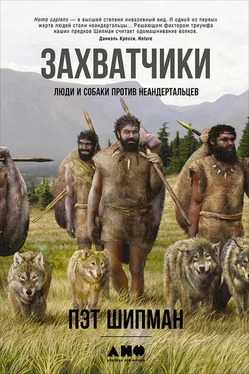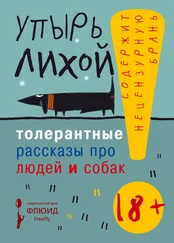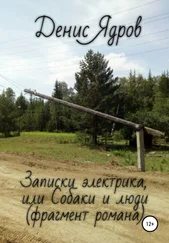B. Hockett and J. Haws, «Nutritional Ecology and the Human Demography of Neandertal Extinction,» Quaternary International 137 (2005): 21–34, doi: 10.1016/j. quaint. 2004.11.017; B. Hockett, «The Consequence of Middle Paleolithic Diets on Pregnant Neandertal Women,» Quaternary International 264 (2011): 78–82; L. Dalen, L. Orlando, B. Shapiro et al., «Partial Genetic Turnover in Neanderthals: Continuity in the East and Population Replacement in the West,» Molecular Biology and Evolution 29 (2012): 1893–1897.
N. Conard, «The Demise of the Neanderthal Cultural Niche and the Beginning of the Upper Paleolithic in Southwestern Germany,» in Neanderthal Lifeways, Subsistence, and Technology: One Hundred Fifty Years of Neanderthal Study, eds. N. Conard and J. Richter (New York: Springer, 2011), 228.
N. Conard, «Changing View of the Relationship between Neanderthals and Modern Humans,» in When Neanderthals and Modern Humans Met, ed. N. Conard (Tubingen: Verlag, 2006), 11.
Higham et al., «The Timing and Spatio-Temporal Patterning.»
D. Adler, O. Bar-Yosef, A. Belfer-Cohen et al., «Dating the Demise: Neanderthal Extinction and the Establishment of Modern Humans in the Southern Caucasus,» Journal of Human Evolution 55 (2008): 817–833; Pinhasa etal., «Revised Age of Late Neanderthal Occupation»; J.-M. Lopez-Garcia, H.-A. Blain, M. Bennasar et al., «Heinrich Event 4 Characterized by Terrestrial Proxies in South-western Europe,» Climate of the Past 9 (2013): 1053–1064.
Higham et al., «Testing Models for the Beginnings of the Aurignacian.»
C. Finlayson, F. Pacheco, J. Rodriguez-Vidal et al., «Late Survival of Neanderthals at the Southernmost Extreme of Europe,» Nature 443 (2006): 850–853.
Dalen et al., «Partial Genetic Turnover in Neanderthals.»
Defleur et al., «Neanderthal Cannibalism at Moula-Guercy»; Rosas et al., «Paleobiology and Comparative Morphology of a Late Neanderthal Sample.»
S. Churchill, R. Franciscus, H. McKean-Peraza et al., «Shanidar 3 Neandertal Rib Puncture Wound and Paleolithic Weaponry», Journal of Human Evolution 57 (2009): 163–178, doi: 10.1016/j. jhevol. 2009.05.010.
F. Ramirez Rozzi, F. d'Errico, M. Vanhaeren et al., «Cutmarked Human Remains Bearing Neandertal Features and Modern Human Remains Associated with the Aurignacian at Les Rois,» Journal of Anthropological Science 87 (2009): 153–185.
C. Finlayson, The Human Who Went Extinct; Why Neanderthals Died Out and We Survived (New York: Oxford University Press, 2009), 118–119.
Froehle and Churchill, «Energetic Competition between Neandertals and Anatomically Modern Humans»; L. Aiello and P. Wheeler, 2003. «Neanderthal Thermoregulation and the Glacial Climate,» in Neanderthals and Modern Humans in the European Landscape during the Last Glaciation, eds. T. van Andel and W. Davies (Cambridge: McDonald Institute for Archaeological Research, University of Cambridge, 2003), 147–166; S. Churchill, «Bioenergetic Perspectives on Neandertal Thermoregulatory and Activity Budgets,» in Neanderthals Revisited: New Approaches and Perspectives, eds. K. Harvatiand T. Harrison (Dordrecht: Springer, 2006), 113–131; M. Sorensen and W. Leonard, «Neanderthal Energetics and Foraging Efficiency,» Journal of Human Evolution 40 (2001): 483–495; A. Steegmann, F. Cerny, and T. Holliday, «Neandertal Cold Adaptation: Physiological and Energetic Factors,» American Journal of Human Biology 14 (2002): 566–583.
Sorensen, Leonard, «Neanderthal Energetics and Foraging Efficiency»; Steegmann et al., «Neandertal Cold Adaptation.»
Aiello, Wheeler, «Neanderthal Thermoregulation.»
J. Gittleman, S. Thompson, «Energy Allocation in Mammalian Reproduction,» American Zoologist 28 (1988): 863–875.
B. Hockett, «The Consequences of Middle Paleolithic Diets on Pregnant Neanderthal Women,» Quaternary International 264 (2012): 78–82, p. 79.
B. Hockett, «The Consequences of Middle Paleolithic Diets on Pregnant Neanderthal Women,» Quaternary International 264 (2012): 78–82, p. 81.
T. Holliday, «Postcranial Evidence of Cold Adaptation in European Neandertals,» American Journal of Physical Anthropology 104 (1997): 245–258.
C. Carbone, J. Gittelman, «A Common Rule for the Scaling of Carnivore Density,» Science 295 (2002): 2273–2276.
См. прекрасный обзор S. E. Churchill, Thin on the Ground (New York: Basic Books, 2014).
C. Hertler and R. Volmer, «Assessing Prey Competition in Fossil Carnivore Communities – A Scenario for Prey Competition and Its Evolutionary Consequences for Tigers in Pleistocene Java,» Palaeogeography, Palaeoclimatology, Palaeoecology 257 (2008): 67–80; H. Hemmer, O. Owen-Smith, and M. Mills, «Predator-Prey Size Relationships in an African Large-Mammal Food Web,» Journal of Animal Ecology 77 (2008): 173–183, doi: 10.1111/j.l365–2656.2007.01314.x.
S. Miinzel, M. Stiller, M. Hofreiter et al., «Pleistocene Bears in the Swabian Jura (Germany): Genetic Replacement, Ecological Displacement, Extinctions and Survival,» Quaternary International 245 (2011): 225–237.
A. Turner and M. Anton, The Big Cats and Their Fossil Relatives: An Illustrated Guide to Their Evolution and Natural History (New York: Columbia University Press, 1997); W. Anyonge, «Body Mass in Large Extant and Extinct Carnivores,» Journal of Zoology London 231 (1993): 339–350.
R. Guthrie, Frozen Fauna of the Mammoth Steppe (Chicago: University of Chicago Press, 1990).
Turner, Anton. Big Cats.
Anyonge, «Body Mass in Large Extant and Extinct Carnivores.»
Churchill, Thin on the Ground, ch. 8.
Hemmer et al., «Predator-Prey Size Relationships.»
Данные из работы D. Brook and D. Bowman, «The Uncertain Blitzkrieg of Pleistocene Megarauna,» Journal of Btogeography 31 (2004): 517–523.
C. Carbone, G. Mace, S. C. Roberts et al., «Energetic Constraints on the Diet of Terrestrial Carnivores,» Nature 402 (1999): 287, doi: 10.1038/46266.
Hertler and Volmer, «Assessing Prey Competition.»
Churchill, Thin on the Ground, 271–273.
D. Stanford, R. Bonnichsen, and R. Morlan, «The Ginsberg Experiment: Modern and Prehistoric Evidence of a Bone-Flaking Technology,» Science 212 (1981): 438–440, doi: 10.1126/science. 212.4493.438.
D. Grayson and F. Delpech, «Tie Large Mammals of Roc de Combe (Lot, France): The Chatelperronian and Aurignacian Assemblages,» Journal of Anthropological Archaeology 27 (2008): 359.
H. Bocherens, D. Drucker, D. Bonjean et al., «Isotopic Evidence for Dietary Ecology of Cave Lion (Panthera spelaea) in North-Western Europe: Prey Choice, Competition and Implications for Extinction,» Quaternary International 245 (2011): 249–261.
Читать дальше
Конец ознакомительного отрывка
Купить книгу






![Марта Стаут - Социопат по соседству [Люди без совести против нас. Как распознать и противостоять] [litres]](/books/389216/marta-staut-sociopat-po-sosedstvu-lyudi-bez-sovest-thumb.webp)





